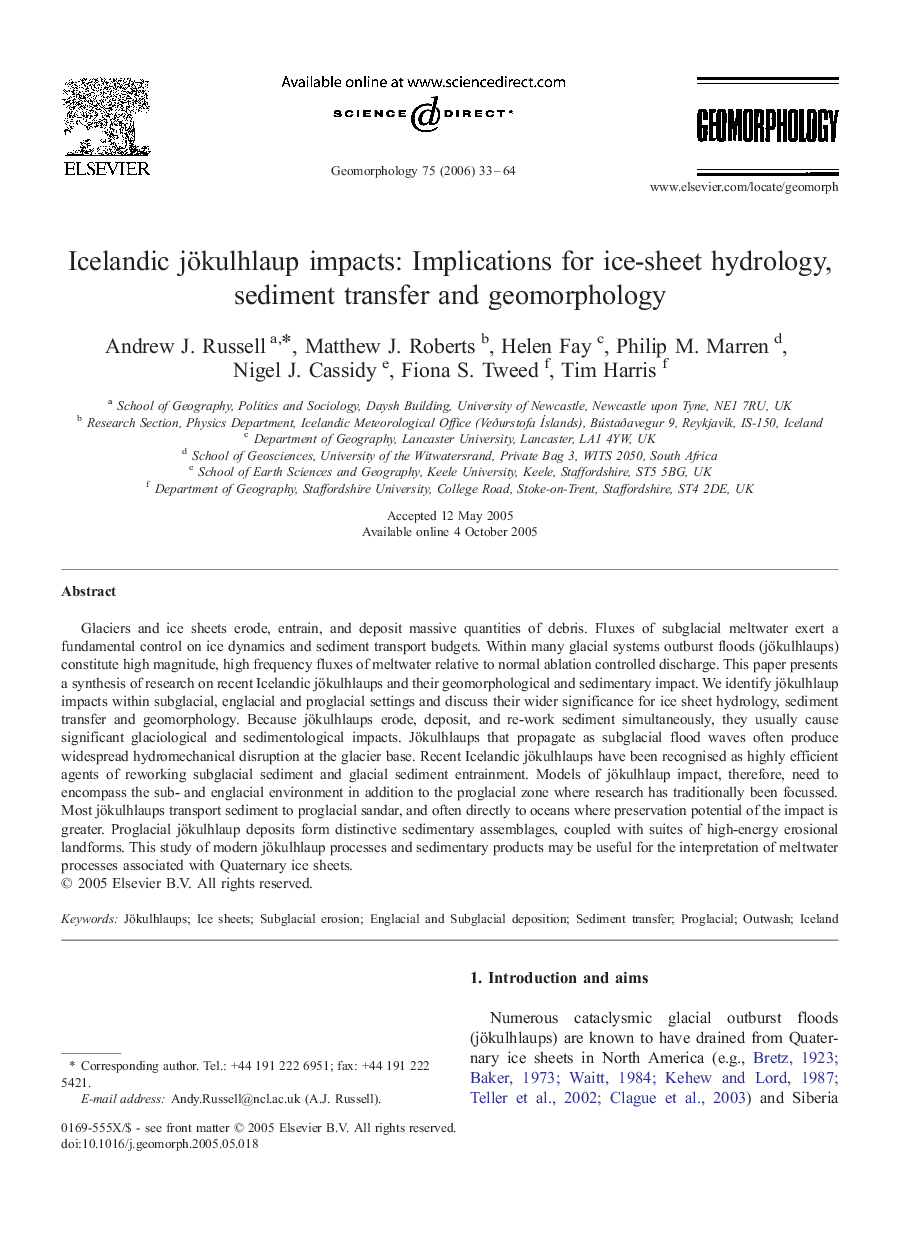| Article ID | Journal | Published Year | Pages | File Type |
|---|---|---|---|---|
| 4687571 | Geomorphology | 2006 | 32 Pages |
Abstract
Glaciers and ice sheets erode, entrain, and deposit massive quantities of debris. Fluxes of subglacial meltwater exert a fundamental control on ice dynamics and sediment transport budgets. Within many glacial systems outburst floods (jökulhlaups) constitute high magnitude, high frequency fluxes of meltwater relative to normal ablation controlled discharge. This paper presents a synthesis of research on recent Icelandic jökulhlaups and their geomorphological and sedimentary impact. We identify jökulhlaup impacts within subglacial, englacial and proglacial settings and discuss their wider significance for ice sheet hydrology, sediment transfer and geomorphology. Because jökulhlaups erode, deposit, and re-work sediment simultaneously, they usually cause significant glaciological and sedimentological impacts. Jökulhlaups that propagate as subglacial flood waves often produce widespread hydromechanical disruption at the glacier base. Recent Icelandic jökulhlaups have been recognised as highly efficient agents of reworking subglacial sediment and glacial sediment entrainment. Models of jökulhlaup impact, therefore, need to encompass the sub- and englacial environment in addition to the proglacial zone where research has traditionally been focussed. Most jökulhlaups transport sediment to proglacial sandar, and often directly to oceans where preservation potential of the impact is greater. Proglacial jökulhlaup deposits form distinctive sedimentary assemblages, coupled with suites of high-energy erosional landforms. This study of modern jökulhlaup processes and sedimentary products may be useful for the interpretation of meltwater processes associated with Quaternary ice sheets.
Related Topics
Physical Sciences and Engineering
Earth and Planetary Sciences
Earth-Surface Processes
Authors
Andrew J. Russell, Matthew J. Roberts, Helen Fay, Philip M. Marren, Nigel J. Cassidy, Fiona S. Tweed, Tim Harris,
